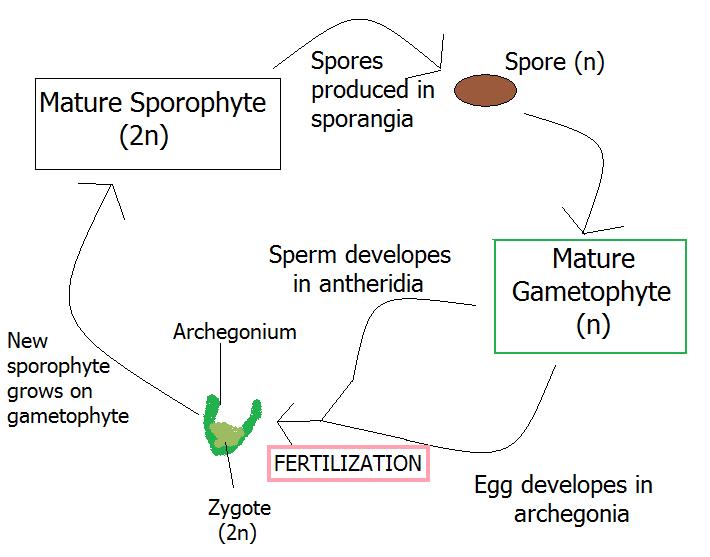Reproduction
Carica papaya is a flowering plant which means that it reproduces sexually through alternation of generations. The lifecycle has a diploid sporophyte phase which is followed by a haploid gametophyte phase. The sporophyte produces spores via meiosis while the gametophyte produces gametes via mitosis. In flowering plants, such as the C. papaya, the female gametes (eggs) are produced in the archegonium and the male gametes (sperm) are produced in the antheridium. Since C. papaya is a vascular plant, its dominant phase is the sporophyte.This diagram shows the general life cycle of Carica papaya.

A single plant can be male, female, or both, but they are usually one or the other. Only female flowers produce fruits, males do not. This plant grows fairly quickly being able to produce fruit in as little as 18 months. The fruit itself can get quite large as well with sizes ranging from 1lb to up to 20lbs. Carica papaya is a little picky about its perfect mating and growing conditions. It requires specific temperatures and water but if you pay attention to these two things, you can grow your own C. papaya tree at home!
|
|
How to Grow Your Own Papaya |
|
SUN: Papaya’s require a lot of
sunlight and heat. They can be grown in the shade, but then the fruit does not get as sweet. Cold temperatures
(below 60ºF/16ºC) and
wind will destroy your plant with prolonged exposure so you want to
plant it in an area where you can control the temperature and wind.
If temperatures are below freezing, it can kill the plant. If you
are planting inside, you will want to turn the plant every week so
the plant grows evenly. This is because the plant will start to grow
towards the sunlight. |
 |
PLANTING: Plants can be grown from the seeds which can be acquired from the fruit itself. Collect seeds from the center of the fruit and allow them to dry out. They require a lot of nutrients, therefore should be planted in well fertilized soil. Also, these plants do not transplant well, so should be planted in a large pot so at most it needs to be transplanted once. Plastic bags should be used to protect the plant against frost and also to help keep the soil moist.
To find out more about how this plant gets its nutrients, head to the nutrition page.
Check out some other cool organisms at Multiple Organisms